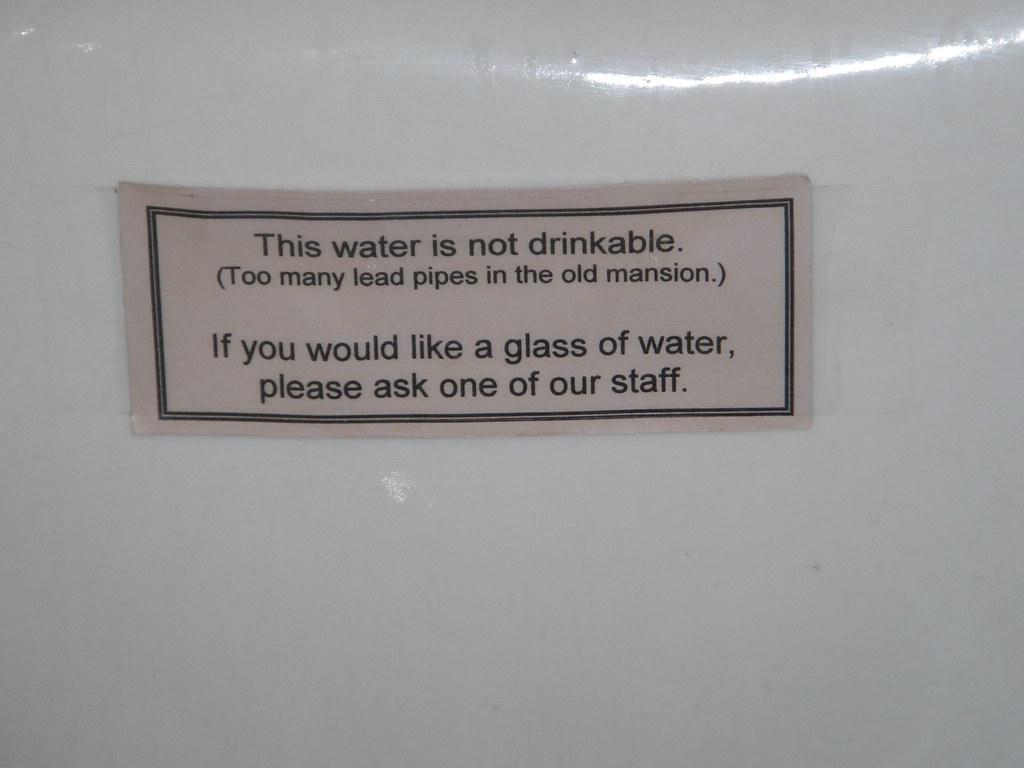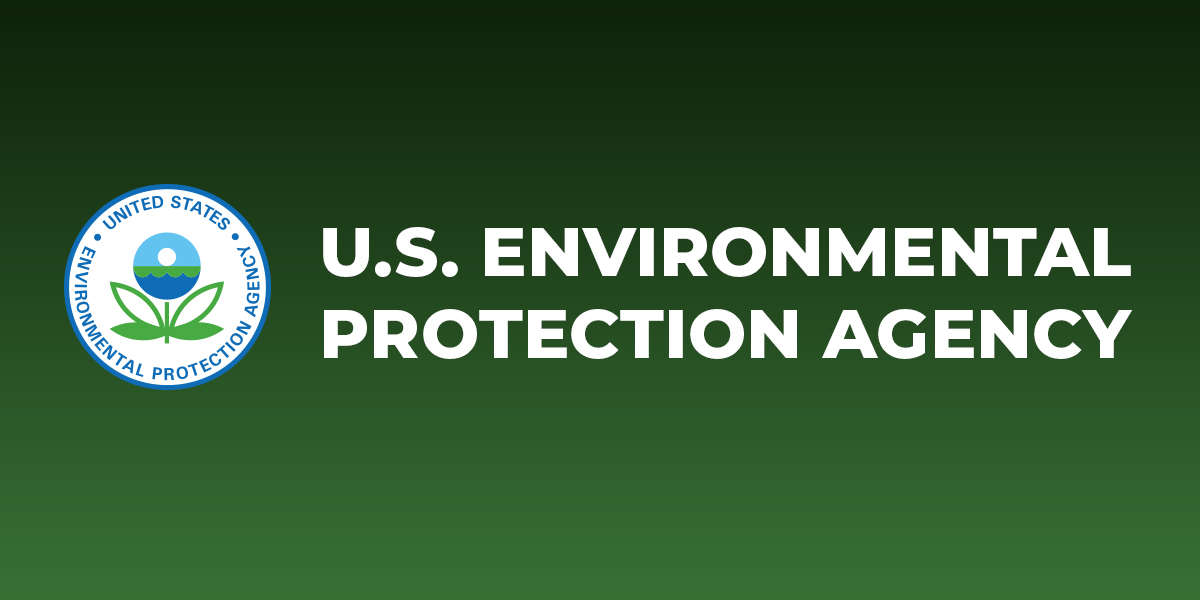I haven't seen a new house with copper (or any metal) pipes in a long time...it's all PVC or PEX and has been for years.In really new houses water pipes are copper with lead solder. I think lead in water is mostly an excuse for Dem PORK. If Dems want to accomplish something for the environment they should fix their broke ass sewage systems in their cities and stop spilling hundreds of millions of gallons of raw untreated sewage into public rivers and oceans.
Navigation
Install the app
How to install the app on iOS
Follow along with the video below to see how to install our site as a web app on your home screen.

Note: This feature currently requires accessing the site using the built-in Safari browser.
More options
You are using an out of date browser. It may not display this or other websites correctly.
You should upgrade or use an alternative browser.
You should upgrade or use an alternative browser.
To Remove Lead Water Pipes, First You Must Find Them
- Thread starter Disir
- Start date
progressive hunter
Diamond Member
- Dec 11, 2018
- 59,263
- 36,081
- 2,615
correct,, but in this case they started buying water from a different source that had more chlorine in the water and this caused the protective layer to erode and allow lead to get into the water,,I apologize for not reading all of the postings on this thread, but I have heard from reliable sources that once a lead pipe has been in service for a number of years, there is no longer any leaching of lead into the water unless something is disturbed. That is to say, it is generally harmless.
This is why in most municipalities, the policy was to leave lead pipes alone until they were damaged and had to be replaced anyway, or when the line was being replaced in a periodic update. There is generally no campaign to simply replace lead supply pipes just because they are made of lead, because that is an ungodly expensive thing to do, and it is NOT NECESSARY to correct any existing health threat.
Has anyone previously posted data indicating lead poisoning of children from lead pipes that had been in service for many years?
That's why it has been largely replaced by PEX now. There is no metal pipe in my mother's house, built about 2001.In colder climates, there have been a lot of reports of PVC piping being less durable, and more prone to cracking where the ground freezes in winter. It's legal here, but if you want your plumbing to last, you want copper.
Last edited:
Water pipes in old house would have galvanized pipes or copper.
Pipes in my old farmhouse were cast iron.
progressive hunter
Diamond Member
- Dec 11, 2018
- 59,263
- 36,081
- 2,615
not for water supply lines,, cast iron was only used for drain lines,,Water pipes in old house would have galvanized pipes or copper.
Pipes in my old farmhouse were cast iron.
It is time to replace much of the cast iron piping....so america needs to step up to the plate
Why?
The bottom line is that no iron or steel pipe will last forever. Every home owner will at some point be forced to deal with plumbing issues. The public should not be forced to pay for it. Newer construction has dealt with this with the introduction of PVC and Pex pipe for potable water and ABS for sewage. People who buy older homes are either stupid or naive to think that plumbing lasts forever.
Over 100 years on mine. Exactly three pipes replaced due to corrosion in a century. (Plus a couple replaced to re-plumb things that were moved.)
not for water supply lines,, cast iron was only used for drain lines.
The guy that plumbed the house (around 1910) missed that memo-main line into the house from the well was iron. Feeds to everything except the outside faucets, garage, and downstairs half-bath were iron.
Lesh
Diamond Member
- Dec 21, 2016
- 66,754
- 33,081
- 2,300
Flint Michigan.I apologize for not reading all of the postings on this thread, but I have heard from reliable sources that once a lead pipe has been in service for a number of years, there is no longer any leaching of lead into the water unless something is disturbed. That is to say, it is generally harmless.
This is why in most municipalities, the policy was to leave lead pipes alone until they were damaged and had to be replaced anyway, or when the line was being replaced in a periodic update. There is generally no campaign to simply replace lead supply pipes just because they are made of lead, because that is an ungodly expensive thing to do, and it is NOT NECESSARY to correct any existing health threat.
Has anyone previously posted data indicating lead poisoning of children from lead pipes that had been in service for many years?
Those "harmless lead pipes" become coated with calcium and are "generally" harmless unless and until something removes that calcium coating.
In the case of Flint, the water being used was reacting to the calcium and dissolving it, exposing those drinking it to the lead...as well as the chems that were dissolving the calcium.
Yes, it is.Having an aging infra structure (lead pipes for instance) is NOT a "failure"...big difference between a large natural disaster and a failure of a city/county,,,
Lesh
Diamond Member
- Dec 21, 2016
- 66,754
- 33,081
- 2,300
Good for you. Most homes built before 1960 had lead feeds.not for water supply lines,, cast iron was only used for drain lines.
The guy that plumbed the house (around 1910) missed that memo-main line into the house from the well was iron. Feeds to everything except the outside faucets, garage, and downstairs half-bath were iron.
progressive hunter
Diamond Member
- Dec 11, 2018
- 59,263
- 36,081
- 2,615
I would love to see that,,,not for water supply lines,, cast iron was only used for drain lines.
The guy that plumbed the house (around 1910) missed that memo-main line into the house from the well was iron. Feeds to everything except the outside faucets, garage, and downstairs half-bath were iron.
to date I have never seen a cast iron pipe smaller than 1 1/2" and around 1910 steel pipe was readily available the house I grew up in was a 1904 and the pipes were on the outside of the walls and were steel,,
I dont see cast iron joints being strong enough to hold the pressure,,
my current 1912 didnt have inside plumbing until 1973,,
progressive hunter
Diamond Member
- Dec 11, 2018
- 59,263
- 36,081
- 2,615
they had steel or copper feeds,, the main line was the lead iron/pipe pipeGood for you. Most homes built before 1960 had lead feeds.not for water supply lines,, cast iron was only used for drain lines.
The guy that plumbed the house (around 1910) missed that memo-main line into the house from the well was iron. Feeds to everything except the outside faucets, garage, and downstairs half-bath were iron.
How do you post this shit with a straight face?Wrong. It's Republicans in Michigans fault, and they should be sent to prison, and the taxes raised on Republican multimillionaires to fix it.
WTF are you talking about?How many copper pipes have you soldered? None, didn't think so. I made my living working with just that medium. The configuration of the soldered joint never allows the water to contact the solder. The solder just holds the pipe in place. Just STFU, you don't know shit.
You have some special soldering technique?
You either have no idea what you're talking about or you're an outright liar. NO ONE solders that perfectly . Oh and we're actually talking about lead PIPES ...not so much replacing lead soldered copper pipes.
For goodness sake, do some basic research before demanding to be a fool.
Legislative History
In 1986 Congress Amended the Safe Drinking Water Act, prohibiting the use of pipes, solder or flux that were not “lead free” in public water systems or plumbing in facilities providing water for human consumption. At the time "lead free” was defined as solder and flux with no more than 0.2% lead and pipes with no more than 8%.

Use of Lead Free Pipes, Fittings, Fixtures, Solder, and Flux for Drinking Water | US EPA
Learn about regulations to implement the Section 1417 of the Safe Drinking Water Act prohibiting the use of lead in plumbing components.
Only in Flint, due to changing water supplies.I apologize for not reading all of the postings on this thread, but I have heard from reliable sources that once a lead pipe has been in service for a number of years, there is no longer any leaching of lead into the water unless something is disturbed. That is to say, it is generally harmless.
This is why in most municipalities, the policy was to leave lead pipes alone until they were damaged and had to be replaced anyway, or when the line was being replaced in a periodic update. There is generally no campaign to simply replace lead supply pipes just because they are made of lead, because that is an ungodly expensive thing to do, and it is NOT NECESSARY to correct any existing health threat.
Has anyone previously posted data indicating lead poisoning of children from lead pipes that had been in service for many years?
in all my 45 yrs of working on old houses I have never seen a single lead water pipe,, they are used fro drain pipes but not water pipes because they cant handle the pressure,,Safe drinking water for everyone in America is an important goal, and Joe Biden’s American Jobs Plan makes a $111 billion investment toward that. While the majority of the funding goes to modernizing water treatment and delivery systems and remediating potentially harmful chemicals like PFAS, what’s gotten the most attention is a $45 billion initiative to “replace 100 percent of the nation’s lead pipes and service lines.”
If we could manage to do this, it would make a huge difference. Lead exposure has been credibly linked to stunted child development, kidney disease, auditory problems, brain damage, behavioral challenges, and more provocatively, crime. We eliminated leaded gasoline and paint in the 1970s and yet it still lingers as a persistent problem. And part of that comes through water tainted as it flows through lead pipes.
But if you want to replace all the lead water pipes in America, the first thing you have to do is find all the lead water pipes in America.

First 100: To Remove Lead Water Pipes, First You Must Find Them
And then you have to remove the whole pipe, including the part on private property.prospect.org
This sounds like it has the makings of a chaotic nightmare. I don't have a problem with it as long as homeowners are not having to come up with money to replace them.
The entire issue in Flint Michigan with their water pipes was due to lead in the water system, so it's a fallacy to say this isn't a problem in the USA.
So far, all we know is that it's an issue in Flynt Michigan.
Who is this “we” you speak of? I posted a link to an article that said the 10 million homes are being served by lead pipes in the United States.
Apparently millions of people are aware that this is an ongoing issue, but you are not one of them.
I think we are past the time you should worry about america and focus on your own country,,,

Canada is now officially a totalitarian shithole
the level of this is amazing,, how can you call yourself a decent people when you allow the government to do this to you for just going to church,, JAILED the pastor, STORMED the church, FENCED it off, now DOZENS of Covid TROOPS in gas masks raid worshippers OUTSIDE! [VIDEO] The pastor of...www.usmessageboard.com
Because of something that fool Blaylock posted on this board???? You're even dumber than you look.
I would love to see that,,,
to date I have never seen a cast iron pipe smaller than 1 1/2" and around 1910 steel pipe was readily available the house I grew up in was a 1904 and the pipes were on the outside of the walls and were steel,,
I dont see cast iron joints being strong enough to hold the pressure,,
my current 1912 didnt have inside plumbing until 1973.
House was built in 1855; central heat, plumbing and electricity added in early 1910s. (I recall the furnace had a date of 1912 cast into the boiler.) Near as anyone could tell, everything was iron. Might have been the preference of the guy that did it, might have been cheaper than steel. Also seem to recall that he plumbed most of the house with the same high pressure/high temp stuff he used for the boiler...maybe he got a hell of a deal on it, and the guy that owned it didn't know the difference or didn't care?
I apologize for not reading all of the postings on this thread, but I have heard from reliable sources that once a lead pipe has been in service for a number of years, there is no longer any leaching of lead into the water unless something is disturbed. That is to say, it is generally harmless.
This is why in most municipalities, the policy was to leave lead pipes alone until they were damaged and had to be replaced anyway, or when the line was being replaced in a periodic update. There is generally no campaign to simply replace lead supply pipes just because they are made of lead, because that is an ungodly expensive thing to do, and it is NOT NECESSARY to correct any existing health threat.
Has anyone previously posted data indicating lead poisoning of children from lead pipes that had been in service for many years?
Here's a link to the EPA site about lead in drinking water. Knock yourself out:

Basic Information about Lead in Drinking Water | US EPA
Questions and answers about lead in drinking water -- health effects, EPA regulations etc.
It's not my job to rebuild after a hurricane that happened 1200 miles from me but we seem to bail out FL and TX quite a lot. You guys forget we are a country, 50 united States. That means that we help each other out when someone needs it.
You're desperately trying to compare apples with pickles.
A hurricane, tornado, earthquake, mudslide, forest fire, or whatever is a natural disaster. Not maintaining your property is not nearly the same thing.
If your house catches fire from a lightning strike or your kid playing with matches in the garage. Your insurance will cover your loss. Same if a hurricane or tornado destroys your house. IF you carry insurance.
If you neglect your house, don't paint it for decades, if it has extensive wood rot, the roof is leaking, and there are termites holding hands to keep it up, that's your problem. If you own the house, you own the plumbing from the meter into your house.
Similar threads
- Replies
- 28
- Views
- 519
- Replies
- 96
- Views
- 6K
- Replies
- 3
- Views
- 293
- Replies
- 9
- Views
- 689
- Replies
- 308
- Views
- 7K
Latest Discussions
- Replies
- 140
- Views
- 505
- Replies
- 3
- Views
- 27
- Replies
- 18
- Views
- 45
- Replies
- 15
- Views
- 48
Forum List
-
-
-
-
-
Political Satire 8018
-
-
-
-
-
-
-
-
-
-
-
-
-
-
-
-
-
-
-
ObamaCare 781
-
-
-
-
-
-
-
-
-
-
-
Member Usernotes 467
-
-
-
-
-
-
-
-
-
-
